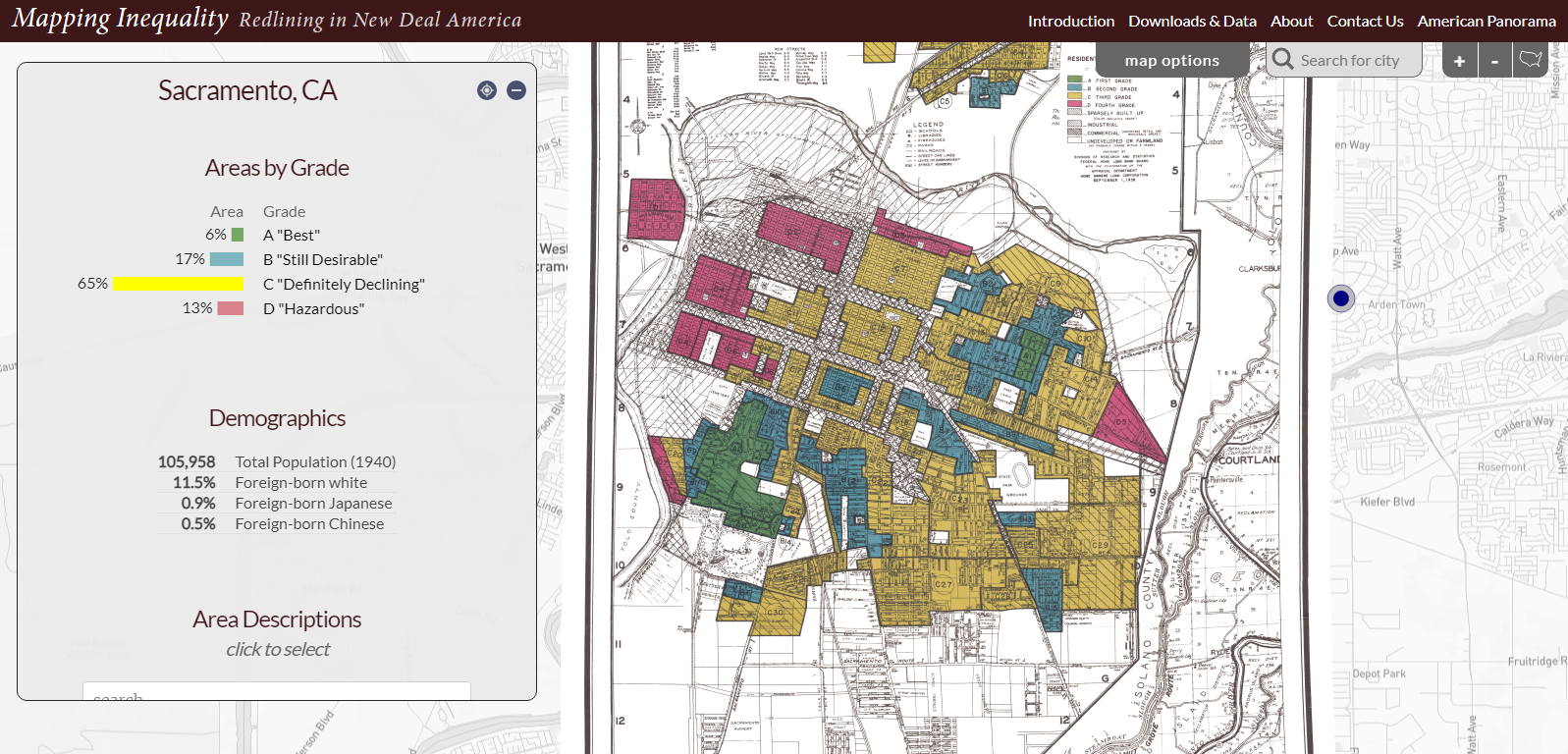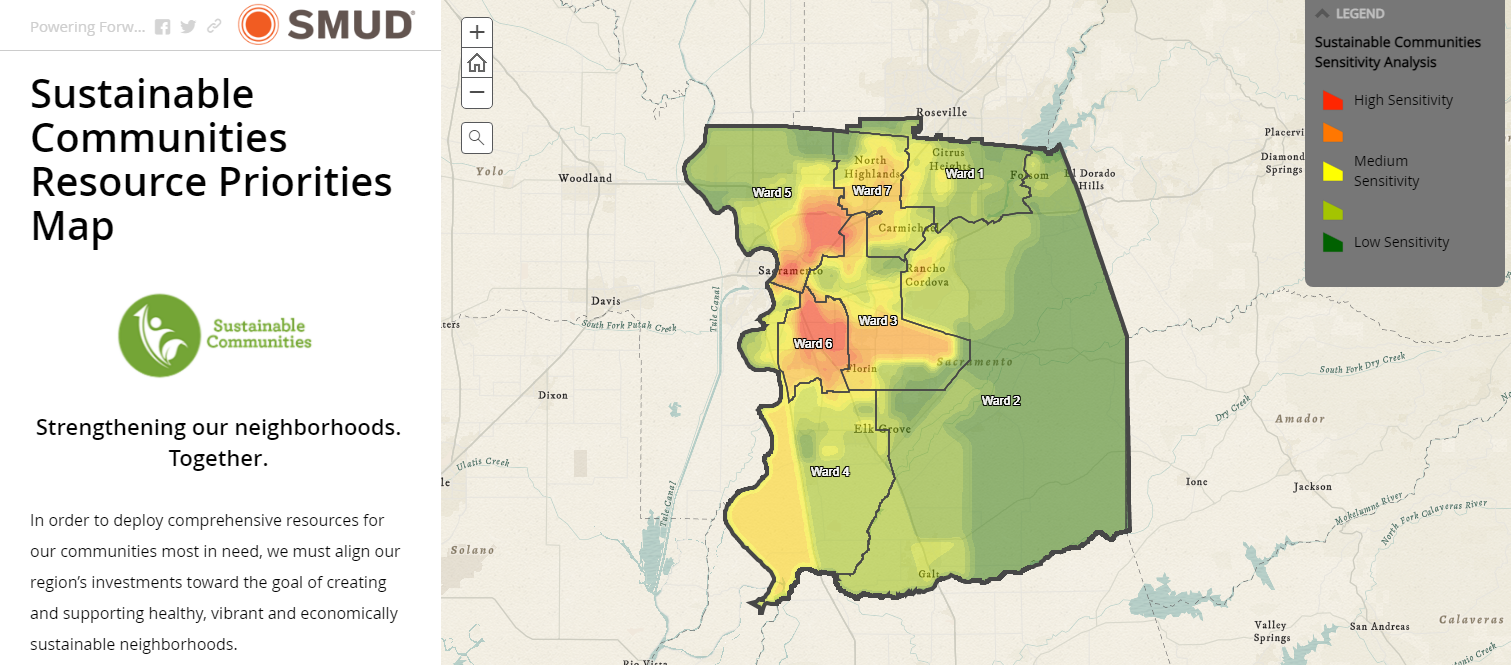On Wednesday, June 16th Habitat Young Professionals, in partnership with MetroEDGE, hosted Sacramento leaders in housing legislation and neighborhood equity for “Behind the Blueprints” – a conversation about the state of Sacramento neighborhoods, historical factors which shaped them, and what we can all do to support equitable housing and resources for all in our community.
With Juneteenth – the annual holiday on June 19th which celebrates the day the last enslaved people in Galveston, Texas were freed in 1865 – approaching, the panel, which included California Assemblymember Kevin McCarty, Sacramento Housing Alliance Executive Director Kendra Lewis, and Director of Sustainable Communities at SMUD Jose Bodipo-Memba, reflected on the significance of Juneteenth as a milestone on the road to equality for Black Americans and its effects on our neighborhoods today, more than 170 years later.
Here are 4 important highlights and takeaways we wanted to share from our recent Habitat Young Professionals “Behind the Blueprints”.
1 – Juneteenth marks the beginning of a new era of movement
In the decade following the end of slavery, the shape of the country changed as Black Americans moved north and west, particularly during the Great Migration, shared Kendra Lewis, Executive Director of the Sacramento Housing Alliance, whose grandfather grew up in Galveston, Texas. Kendra’s family was one of many who sought new life on the west coast, seeking work and escape from oppressive conditions in the south. She recalls celebrating Juneteenth every year growing up in a San Francisco neighborhood (a festival she describes as having “lots of cowboy things like rodeos, and great food,” influenced by their Texas origin) where many families shared the common ancestry and holiday tradition because it was the only place they were allowed to live.
As Kendra notes, many Black families were indeed wealthy enough to purchase homes in desirable areas of their new home cities, but were denied the opportunity by racially restrictive housing and lending practices. A stigma arose, suggesting that people of color lived in undesirable neighborhoods because they were poor, further creating a narrative of segregation by design.
2 – Our neighborhoods remain influenced by historically discriminatory housing practices

Ratings of Sacramento neighborhoods determined in 1937 by the Federal Home Loan Bank Board and the Home Owners Loan Corporation (HOLC). Click here to view the interactive mapping website.
Segregation of neighborhoods was a regular practice during this century of migration, and its effects remain on our cities today. Sacramento in particular saw communities of color limited to specific neighborhoods on the west end, which would later be displaced by major infrastructure projects like the construction of Highway 50 and the Capitol Mall. Jose Bodipo-Memba, Director of Sustainable Communities at SMUD, shared the impacts of this displacement: for example, Oak Park, once the city’s wealthiest neighborhood built for workers in the Capitol, now falls behind in major markers of health and access to resources, education, or jobs.
Both Jose and Kendra note that racially-based housing restrictions often forced communities of color into a city’s least healthy industrial zones as a standard practice. Where Kendra grew up in San Francisco, the Hunter’s Point neighborhood their family called home became a ship yard during WWII. Pollution and waste from the factories made for poor air quality and health problems for local families. When the war was over, the yard was all but abandoned and left desolate and dangerous. A similar pattern is seen in Sacramento, where freeways built through historically Black or Asian neighborhoods lead to high sensitivity areas to environmental factors like air quality with effects on the health of local residents.

SMUD Resource Priorities Map of the Sacramento region. Click here to view the interactive map and elements of health, poverty, and resource access across local neighborhoods.
3 – Racially restrictive covenants remain on many Sacramento region properties today
In 1959, California passed the Fair Employment and Housing Act, which made it illegal for land or property owners to discriminate against renters or buyers based on a number of factors including race. However, while technically the existing discriminatory covenants tied to land or properties cannot be enforced, they remain tied to and written in deeds even when changing ownership. Assemblymember Kevin McCarty, District 7 representative in the California State Assembly, shared a recollection of purchasing his first home, and the shock he received as a bi-racial buyer when reading the documents tied to his property which suggested just a generation ago he would have been denied the opportunity to become a homeowner there.
The Assemblymember has proposed a bill, AB 1446, which would create standardized procedures to remove historically discriminatory covenants from any deed of real property in the state of California. AB1446 is modeled after a similar bill proposed in 2009, which then-Governor Arnold Schwarzenegger vetoed, saying “While the goal of this measure is a worthy one, the practical legal effect is negligible,” as the covenants in question are “already illegal and void under existing law.”
Assemblymember McCarty urges that it is indeed important to remove such historically racist language, as no future homeowner should have to relive the pain of history’s discrimination each time a home is sold. Habitat agrees, which is why Habitat for Humanity California (the state support organization for all 40 local Habitat for Humanity affiliates across the state) is endorsing the bill. The language of the pending bill can be found here.
4 – We can all be part of Sacramento’s housing future
Juneteenth marks an imperative milestone on the critical journey to equality for all, a journey we are still on given the many inequalities still facing Communities of Color. Historical housing practices have often denied communities of color the opportunity to build wealth and live in healthy spaces, something that is evident in that the homeownership gap between Black and white Americans is larger now than in the 1960’s. Though we might find ourselves asking, “but what can I do?”, we can all be a part of the change that is needed to create equity in our region and neighborhoods.
MetroEDGE Empower Committee Chair Liz Lorand shares a few ways to get engaged and learn more, recommending “The View From Here” podcast episode “Making Meadowview” about the local neighborhood, and getting involved with local organizations like Habitat, Sacramento Self Help Housing, and the Sacramento Housing Alliance.
“You may not be able to put on a suit and come down to the Capitol for legislative hearings,” says Assemblymember McCarty, “but the most important thing is to just be involved.” Whether that’s by sharing support on social media, staying aware of legislation by tuning in for updates, or seeking out resources to learn more – every voice counts.
Looking to get more engaged? Here are some additional resources recommended by our “Behind the Blueprints” panelists!
Additional Resources
Reading Recommendations from Kendra:

- The Color of Law, by Richard Rothstein
- The Warmth of Other Suns, by Isabel Wilkerson
- Race for Profit, by Keeanga-Yamahtta Taylor
- The Road to Resegregation, by Alex Schafran
- Segregation by Design, by Jessica Trounstine
- History Bonus books: A People’s History of the United States and Stamped from the Beginning by Ibram X. Kendi.
Additional Bills the Sacramento Housing Alliance is Following:
- AB989 – Land use/review of affordable housing denials
- AB1199 – Homes for Families and Corporate Monopoly Transparency Excise Tax
- AB71 – Creates the Bring CA Home Fund to provide resources for homelessness
- SB625 – Establishes the California Investment and Innovation Program for the purpose of providing grants to qualified community development financial institutions
Find Juneteenth Events Happening in Sacramento
Panelists:
Assemblymember Kevin McCarty, California State Assembly, District 7 (Sacramento Region)
Kendra Lewis, Executive Director, Sacramento Housing Alliance
Jose Bodipo-Memba, Director, Sustainable Communities, SMUD
Liz Lewin, MetroEDGE Empower Committee Chair
Moderators:
Erin Wood, Habitat Young Professionals President & Kaitlyn Bathke, Community Engagement Officer and Habitat Young Professionals Staff Liaison , Habitat for Humanity of Greater Sacramento
Interested in learning more about HYP or Habitat California’s advocacy focus?
Visit HabitatGreaterSac.org/HYP to learn more about upcoming Habitat Young Professionals events and click here to follow what priorities and policy solutions Habitat is currently advocating for at the California state level.
Uncategorized